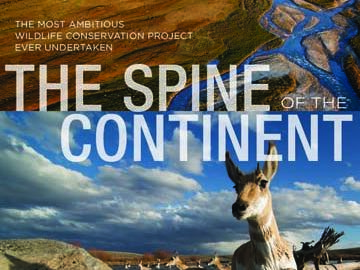
A Highway for Wildlife

By Peter Fish
This is the first in many postings that will report on the natural world and environment of the West’s 13 states.
The West’s wild animals are like us. Sometimes they want a change of scene. A Montana grizzly bear needs a few hundred miles to move around in. Researchers tracked one wolf that roamed Montana and Western Canada for 2 years and 45,000 miles.
You learn this, and more, in Mary Ellen Hannibal’s entertaining new book, The Spine of the Continent. The spine is the 5,000 miles of Rocky Mountains running from Canada down through the American West into Mexico. It’s vast and it’s gorgeous. And it provides a pathway for animals like the grizzly and wolf—and jaguar and pika and more—to find food and mates.
But there’s a problem. As the West sprouts interstates and vacation homes, the pathway is getting chopped up into little pieces, preventing animals from moving around. For a lot of species, that’s bad—like extinction bad—news.
But Spine of the Continent isn’t a gloomy book. Hannibal introduces us to a passionate cadre of scientists, ranchers, regular citizens—from a Zen Buddhist biologist to a Colorado hairdresser-turned-beaver expert—working to create a wildlife corridor to run the length of the spine. It’s a wackily ambitious idea, maybe the most ambitious since the U.S. first gave the world the national park. Will it happen? Read The Spine of the Continent and you’ll find yourself praying it does.

